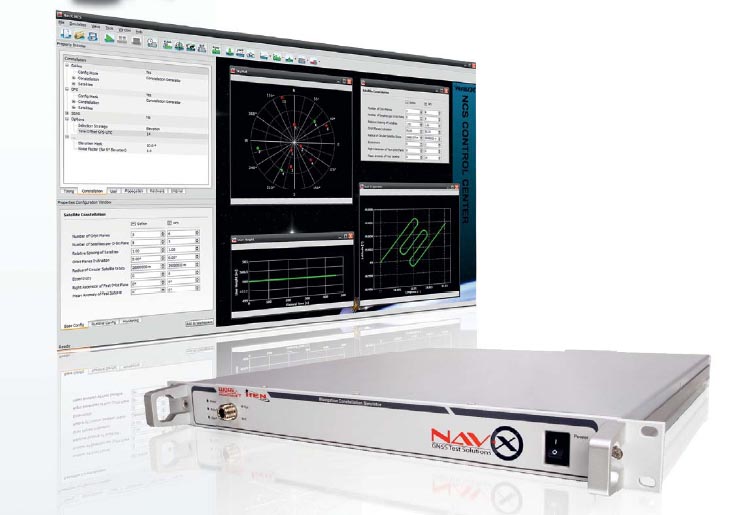Most folks look to a new year as an opportunity for fresh starts and new projects. For the GPS community, however, the October 1 start of the 2016 federal fiscal year (FY16) will likely be more about the hangover — that is, the issues that are hanging over into the next 12 months, unresolved.
At the top of that list of unfinished business are two system decisions: a go/no-go determination on whether the United States will build eLoran as the U.S. backup to GPS and deciding whether or not to choose a new contractor for the GPS III program.
Most folks look to a new year as an opportunity for fresh starts and new projects. For the GPS community, however, the October 1 start of the 2016 federal fiscal year (FY16) will likely be more about the hangover — that is, the issues that are hanging over into the next 12 months, unresolved.
At the top of that list of unfinished business are two system decisions: a go/no-go determination on whether the United States will build eLoran as the U.S. backup to GPS and deciding whether or not to choose a new contractor for the GPS III program.
The eLoran decision is on the agenda of the September 3 meeting of the nation’s navigation managers — the National Executive Committee (ExCom) for Space-Based Positioning, Navigation, and Timing (PNT). They have been kicking around the question of how to provide a truly independent backup for GPS for more than a year despite that fact that eLoran has long been widely supported as both the best and the most cost-effective choice. Although the ExCom might be inclined to punt their decision down the road yet again, they are under heavy pressure from Congress to settle on a course of action.
Perhaps more importantly yet another delay may blunt the broad usefulness of a system that is gaining international traction.
A number of countries, including South Korea, have announced plans to establish eLoran networks, suggesting the growth of a global capability with enormous promise — especially for indoor positioning and navigation. Europe already has an established system, but the decision of France and Denmark to pull out by the end of this year has put that infrastructure in jeopardy. The decision by the ExCom, experts have suggested, could influence the final disposition of Europe’s eLoran network.
The biggest challenge for eLoran in the United States, however, is an unwillingness among the key agencies to take on management of the program and, therefore, responsibilities for its bills. The ExCom must ultimately decide not only whether to go ahead but which agency gets tapped to take the lead — and the fiscal hit.
GPS III Competition
The GPS Directorate is moving ahead with plans to open up competition for the contract to build the next round of GPS III satellites, although with much more meager enticements than it originally dangled before GPS program outsiders.
The GPS constellation’s managers announced in June 2014 that they were looking for information to help them determine if other companies were capable of taking on the task. Deeply unhappy with program delays under incumbent contractor Lockheed Martin and its navigation payload supplier Exelis, the Air Force planned to award two potential competitors $200 million each to help determine if they could do better.
By April of 2015, however, the deal on the table had changed radically. The Directorate announced plans to award contracts to as many as three firms, but those deals would only be worth, at most, $6 million each. Instead of going all the way through critical design review those chosen would only have to show that they had, or were able to attain, a long list of capabilities, including the ability to produce an average of two satellites a year. In another change from the first plan, Lockheed Martin would be allowed to compete right from the beginning.
A draft RFP for the GPS Production Readiness Feasibility Assessment contract was released July 20 for comment. An August 19 synopsis said that the technical requirements would include the current GPS III baseline for spacecraft 1 through 8 “with the addition of redesigned Nuclear Detonation Detection System (NDS), Search and Rescue/GPS (SAR/GPS), and Laser Retroreflector Array (LRA) payloads, Unified S-Band (USB) compliance, Regional Military Protection capability; all without changing or impacting the GPS Next Generation Operational Control Segment (OCX) or Military GPS User Equipment (MGUE) interfaces.”
As of the end of August, the GPS Directorate appeared to be on track to release a final request for proposals by the end of September 2015 with awards to be made by the end of March 2016. The winners will have 38 months to complete their tasks, with a decision on who will build up to 22 GPS III satellites to be made in fiscal year 2018.
In the meantime Lockheed Martin continues its work on the first tranche of GPS IIIs. The first GPS III spacecraft began system-level testing after final integration of the system module and propulsion core was completed in May. As of late August the first space vehicle (SV01) had completed acoustics testing, which simulates the launch environment, said company spokesman Chip Eschenfelder.
“For the rest of the year we will continue SV01 environment testing and production efforts on SV02-08,” Eschenfelder told Inside GNSS.
Raytheon, the contractor for the new ground system, the Next Generation Operational Control System or OCX, is also forging ahead. It has installed hardware to support both the Launch and Checkout System (LCS) and the Master Control Station at Schriever Air Force Base. It has also developed and integrated all of the software for the cyber-hardened LCS, which provides launch and checkout capability for the initial GPS III launches, said company spokesman Michelle Lammers.
“That software is now undergoing testing,” she said in an emailed statement.
Other tests are on the horizon. Upcoming milestones include the LCS Configuration Item Qualification Test followed by LCS Factory Qualification Test.
“We’re also closing out Critical Design Review (CDR) of Iteration 1.6 software development,” Lammers wrote.
Dueling Interference Studies
Meanwhile, back in Washington, two efforts are under way to test the degree to which GPS receivers can co-exist with terrestrial services using frequencies in neighboring RF bands.
Both tests spring from the controversy around a proposal by mobile satellite communications company LightSquared to rezone its frequencies to support a wireless broadband network. The project was put on hold in February 2012 after tests showed that the network’s high-power signals would overload the majority of GPS receivers. LightSquared filed for bankruptcy later that year.
In the weeks before the Federal Communications Commission (FCC) tabled the LightSquared project, the PNT ExCom agreed to establish “new GPS spectrum interference standards that would help inform future proposals for non-space commercial uses the bands adjacent to the GPS signals.”
That emphasis on the future — future receivers and future uses of neighboring spectrum — was later underscored by the National Telecommunications and Information Administration, which manages federal frequencies. It told the FCC in a February 2012 that the standards would “ensure that any such proposals are implemented without affecting existing and evolving uses the space-based PNT services vital to economic, public safety, scientific, and national security needs.”
The first step in getting to those standards is the Adjacent-Band Compatibility Assessment, a multi-year undertaking whose complexity is belied by the effort’s nickname, the ABC Assessment. The Department of Transportation (DoT), which is managing the study, held several workshops starting last fall, then postponed the one set for June 19 of this year. The reason they said in a June 2 email was that the test plan they had hoped to discuss at the meeting had been delayed.
Although a new date has not been announced, DOT now expects to hold the event sometime in the next several months, the department said in an August 20 response to a question from Inside GNSS.
“The next workshop is planned to be held after the Draft DoT GPS Adjacent Band Compatibility Assessment test plan is released in the Federal Register for public comment,” the agency wrote in an email response to questions from Inside GNSS. “At this time, we anticipate that the workshop will be scheduled for this fall.”
DoT added that it anticipates “that the draft test plan will be released in the Federal Register for public comment very soon.” DoT’s testing has not yet commenced.
One concern raised by the delay is the matter of funding. The federal government is very unlikely to have its spending bills passed and signed by October 1. While a government shutdown is more likely than not, a continuing resolution (CR) is almost a certainty, according to federal budget expert Stan Collender, executive vice president at Qorvis Communications.
The effects of a shutdown is unclear, but there appears to be little concern about a CR.
“Should there be a Continuing Resolution,” DoT wrote in its response, “work will still continue on the DOT GPS Adjacent Band Compatibility Assessment.”
A $1-million request in the FY16 budget would move the assessment along. That funding is being managed by the Office of the Assistant Secretary for Research and Technology (OST-R), which is part of the Office of the Secretary of Transportation. That request, according to the agency’s written response would provide “sufficient funding to continue the study.”
Sources who spoke to Inside GNSS have suggested a number of reasons for the plan’s delay, including pressure from interested parties. Undoubtedly more delay will occur once the plan appears in the Federal Register as the agency must work through the comments.
“When DoT publishes the test plan in the Federal Register,” the GPS Industry Alliance wrote, ‘all interested parties — federal and non-federal entities — will have a further and complete opportunity to provide feedback so that DoT is fully informed about how tests should be conducted.”
LightSquared has been pushing hard to influence the approach taken by the DoT researchers. It has criticized the study’s methodology and the standards it will use to measure interference in the ABC workshops and in meetings of the RTCA, a standards body working with the Federal Aviation Administration on the portion of the assessment dealing with certified GPS receivers for aircraft.
LightSquared has also launched tests of its own involving nearly four dozen GPS receivers chosen, the firm explained earlier, because they are considered to be economically significant. The test focuses on KPI, that is key performance indicators such as changes in position error as opposed to the DoT’s more widely accepted metric of signal-to-noise ratio.
LightSquared spokesman Ashley Durmer said the testing was underway and the results would be made public in the fall. She also said the firm may file a new iteration of its test plan once the ABC Assessment plan was published. She could not say how a test plan update could be integrated with results from testing already under way.
Perhaps more important than the choice of KPI is the fact that LightSquared chose to used the 2008 GPS Standard Positioning Service (SPS) Performance Standard as a reference for the tests — an out-of-date yardstick that has been eclipsed years ago by modern accuracies and practices. The use of such an old performance standard for the tests has raised questions about whether the effort is designed to establish the legal standing of a standard so low that LightSquared could easily meet it even while creating interference for modern GPS receivers.
Authorization Pending
LightSquared is a factor in another ongoing issue — the requirement being enforced by FCC that all non-GPS providers of satellite navigation signals obtain U.S. authorization before their signals can officially be received in the United States.
The requirement is rooted in the World Trade Organization Telecom Agreement of the late 1990s, but it has only recently become an issue for the satellite navigation community as new GNSS constellations have come into service. System providers can apply for authorization, as can receiver manufacturers that build equipment capable of receiving signals from non-GPS constellations.
LightSquared asserted in a July 2 filing with the FCC that receiver manufacturers seeking authorization for user equipment that uses non-U.S. GNSS services should have to agree to accommodate their RF neighbors before being granted authorization.
The European Union (EU) has applied as a system provider, sending a letter requesting authorization for the receipt of Galileo signals. Although it has been nearly a year since that letter was conveyed it has yet to be published by the FCC, which is required to seek comment on authorization requests.
It will be interesting to see if the EU’s request is published in the Federal Register in time for the next meeting of the Civil GPS Service Interface Committee (CGSIC), a forum created as an avenue for exchanging information about GPS with the civil user community, including international users. The CGSIC meeting will be held September 14 and 15 in conjunction with the ION GNSS+ 2015, the Institute of Navigation’s big annual conference.
Patent (Fix) Pending
Another issue has been lingering on the PNT community’s get-it-done list — the still-in-force British patent on the signal structure of the Galileo E1 signal.
The patent is part of a family of intellectual property right (IPR) filings that stretches around the globe.
Originally two patent families were involved in the dispute — one focused on the GPS L1C signal and one on Galileo E1. Both signals use variations on a time-multiplexed binary offset carrier (TMBOC) signal structure jointly developed by U.S. and European experts to make the two GNSS systems’ signals more interoperable.
This signal structure was worked out by experts brought together by the Galileo Signal Task Force of the European Commission (EC), a group established by international agreement to further cooperation between Europe and the United States. Sources told Inside GNSS at the time that the signal structure that was finally adopted was contributed by the United States with the understanding that it would be available to all to use for free.
Attending the task force meetings were signal specialists from the U.S. and the European Union including two experts associated with the British Ministry of Defence (MOD) and one of its agencies the Defence Science and Technology Laboratory. DSTL is a for-profit operation that develops and helps distribute British defense-related technologies. According to its 2014/2015 annual report, DSTL’s group operating profit increased this year, rising to £30 million ($47.1 million) from £26 million ($40.8 million) the year before.
The two British experts brought the signal structures back to Great Britain and the MOD subsequently filed global patents on both. Those patents came to light late in 2011 when Ploughshare Innovations, a British firm that markets technology for the ministry, began seeking royalties from receiver manufacturers in North America and Europe.
The assertion of GNSS signal IPR roiled international relations and so infuriated U.S. officials that they threatened to undermine future technical cooperation. Ultimately the patents on the L1C signal were revoked in the fall of 2012.
The dispute over the Galileo-related patents, however, has yet to be resolved. As things stand, any firm that makes a receiver that uses the E1 signal potentially could be asked to pay royalties.
Negotiations continue between DSTL and the European Union — a potentially delicate political problem since the United Kingdom is a EU member. The process is likely further complicated by the fact that the EU is in the middle of moving to a Union-wide patent structure with ‘unitary patents” that will provide “uniform protection across 25 EU countries on a one-stop-shop basis,” according to the European Commission web site.
“We are still in discussions with the European Commission,” said DSTL spokesperson Vicky Torraca, who noted that those negotiations involve more than one EC directorate-general (DG).
Under the EU’s rules, the discussions are focused on the EU licensing of the UK’s interest in the patents.
“In line with Union financial rules,” said Heli Pietila, press officer for DG Internal Market, Industry, Entrepreneurship, and SMEs, “the license for UK patents concerning GNSS signals will be acquired by the Commission through a procurement procedure.” Pietila declined to comment on those discussions.
“The EU bodies procure under the rules of the so-called Financial Regulation and the related Rules of Application,” explained Ingo Baumann, a partner in the law firm BHO in Cologne, Germany. These rules, under the overarching EU treaties, are “the fundamental documents governing the financial management of the EU bodies.”
It appears, Baumann said, that the European Commission or European GNSS Agency, intends to use a formal procurement procedure where they would ask the holder of the patents to submit an offer for providing licenses to the relevant intellectual property. It would be reasonable, he said, for such a license to be valid for all purposes related to the Galileo program; to cover the EU, the Commission, the European GNSS Agency, and the European Space Agency and to allow sublicensing to industry and other involved stakeholders.
“Normally, they would even claim to get the right of modifying, updating etc. the IPR (Intellectual Property Rights) by themselves or by third parties,” he said.
The British patent holder, however, is not required to grant a license to the EU, he said, which could present a problem.
“There is likely no legal ground to force this, besides by political levels.”






